Turn the Korean DMZ into a bridge of peace? Why major artists say the idea isn’t crazy
- Share via
From atop a border observatory, South Korean artist Jae-Eun Choi gazes north over a misted wilderness of glowing fall oaks and maples, the setting for her proposed magnum opus. Her plan, she’s been told, sounds impossible. “But we must,” she insists, persuasively enough to convince a team of internationally renowned artists and architects to join her.
They hope to achieve what politicians have failed to do since 1953, the year Choi was born: bring the two enemy nations of the Korean peninsula together in peaceful common cause.
And maybe help defuse an escalating threat of global nuclear war.
As she watches, six rare, white-naped cranes cross the mountainous backdrop that is North Korea. Soon they’ll be joined by even more endangered red-crowned cranes, symbols of luck and longevity that appear in silk paintings throughout the Far East. Choi’s site, in the heart of the Korean Demilitarized Zone, is where more than half of the world’s remaining red-crowned cranes winter.
Over six decades, this 160-mile-long, 2.5-mile-wide no-man’s land separating two of the world’s most hostile armies has reverted to nature. Ironically, it is now one of Asia’s most important wildlife sanctuaries, an accidental refuge to scores of imperiled plants and animals — including orchids, leopard cats, Eurasian otters and the Amur goral, a nearly vanished antelope-goat.
“From the blood of many young soldiers who sacrificed their lives, a garden blossomed,” Choi says.
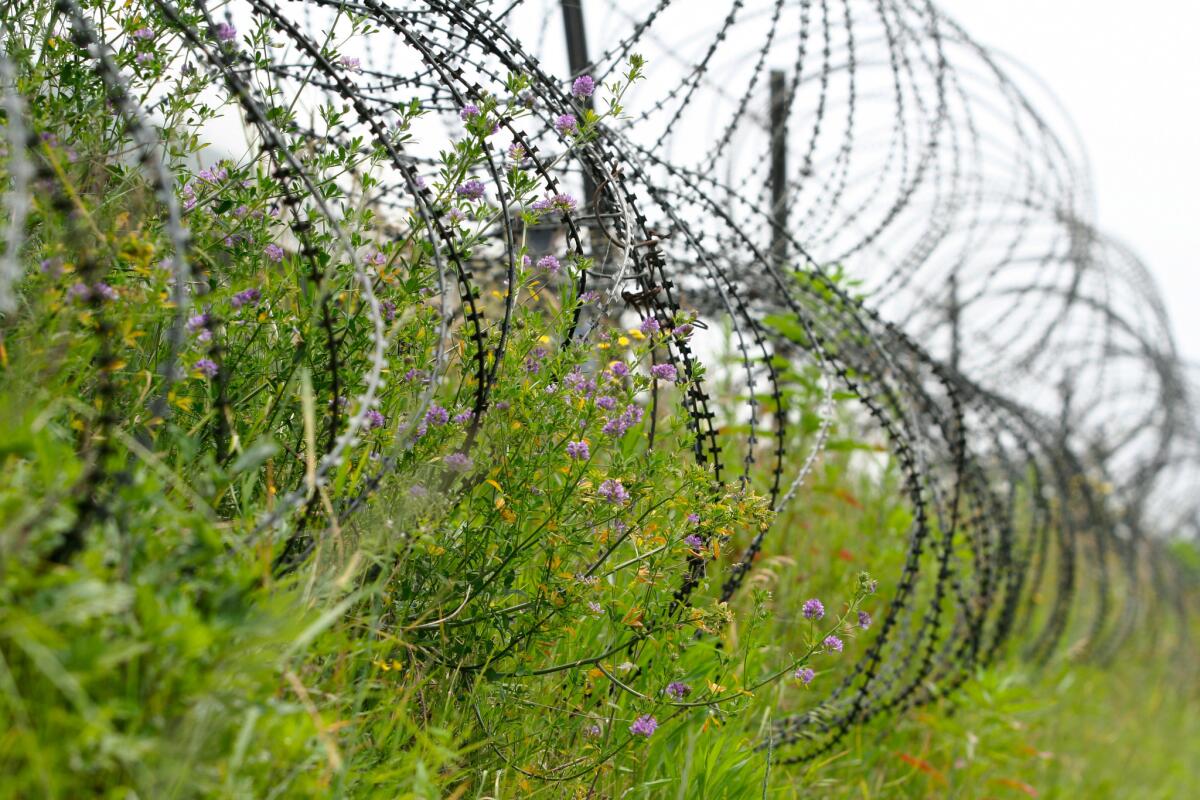
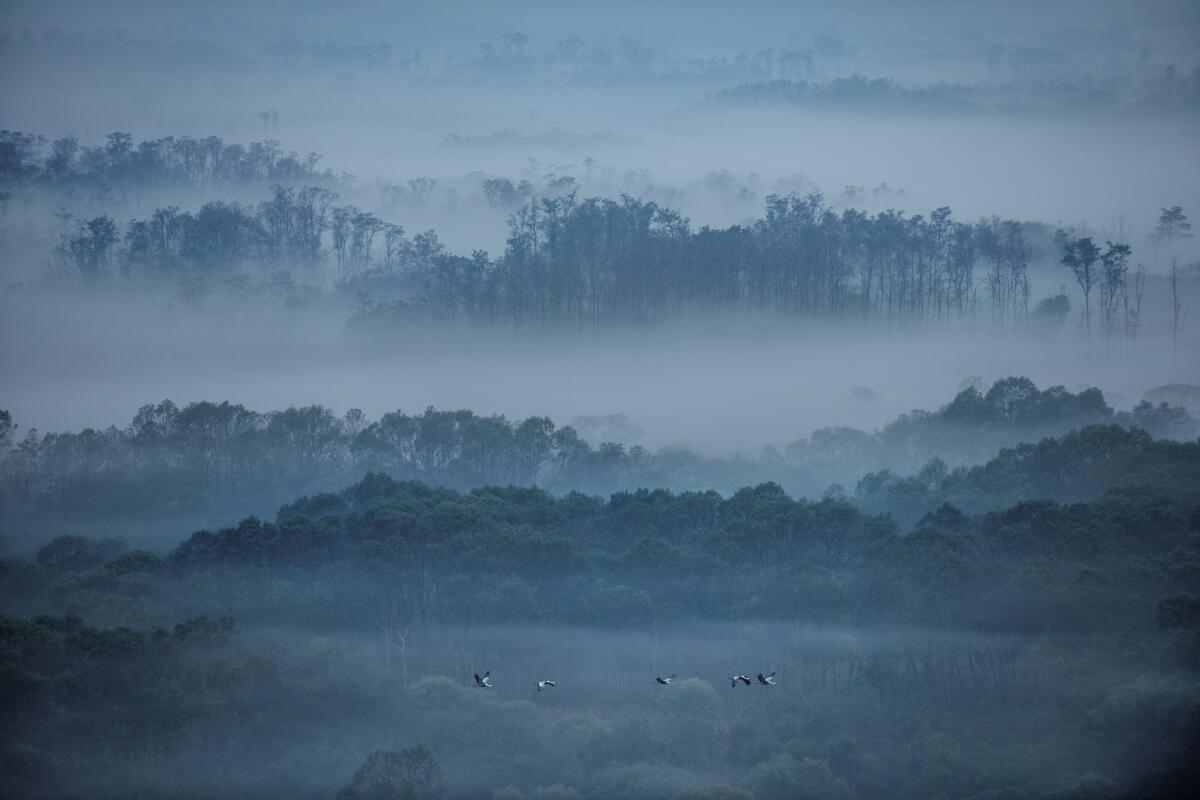
Previous efforts to declare the DMZ an international peace park or a UNESCO World Heritage Site have failed to interest North Korea. But this time, she and her collaborators believe, may be different.
Jae-Eun Choi has always pushed the edge of what’s possible. Spurning a career in fashion design after college, she left Korea to study flower arranging in Japan with ikebana master and Oscar-nominated film director Hiroshi Teshigahara (“Woman in the Dunes,” 1965). But instead of cutting flowers, she found that she wanted to root them. With the blessing of sculptor Isamu Noguchi, who designed Tokyo’s indoor Sogetsu Plaza, she filled it with 13 tons of soil covered with grass seed, which sprouted during her exhibition into an undulating green carpet.
Freed from ikebana’s intimate scale, she began turning entire buildings into vases: a tree bursting from a corroding steel tower to symbolize the end of Korea’s military dictatorship, a church crowned with a bamboo forest. From 40,000 bottles she recycled herself from bars and restaurants, she built a 90-foot-high art expo pavilion. For the Venice Biennale in 1995, she constructed Japan’s pavilion from hundreds of stacked slabs of recycled plastic. Outside UNESCO’s Paris headquarters, she lighted a tea ceremony installation with a giant orange moon.
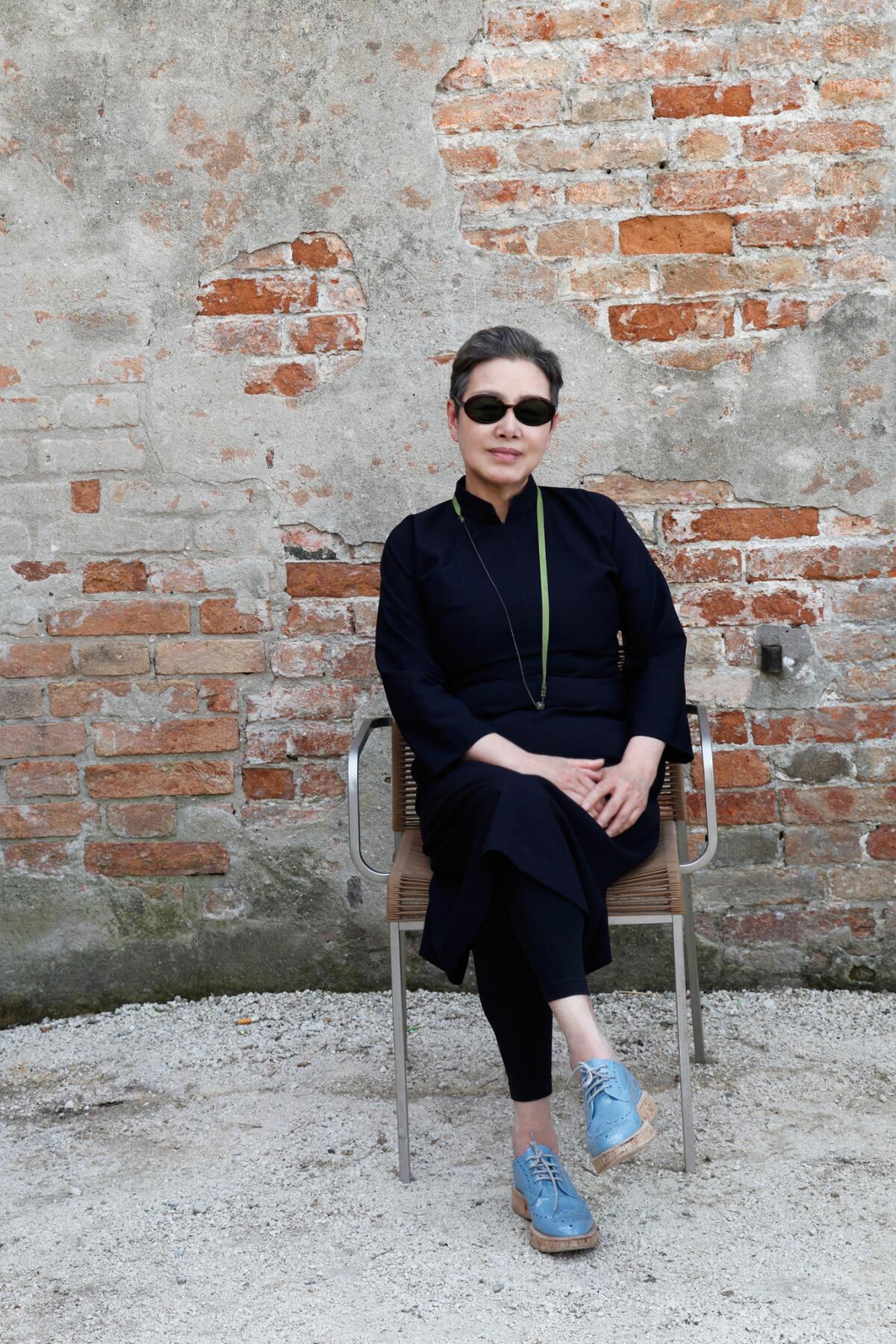
For three decades, she’s buried sheets of her hand-made bark paper on four continents, exhuming them to exhibit years later, transformed by soil, minerals, microbes and time. Her new project may require similar patience. In 1989, she’d wept at Brandenburg Gate as the Berlin Wall fell, wondering if it could ever happen in her own land. After participating in a 2014 group show about the DMZ, she called a friend in Tokyo with an idea.
The friend was Shigeru Ban, winner of that year’s Pritzker Prize — architecture’s Nobel — for building refugee and disaster relief camps from inexpensive, sustainable materials such as cardboard tubing and bamboo. At the 2016 Venice Architectural Biennale, Ban and Choi presented a scale model of a 13-kilometer (about eight-mile), garden-lined bamboo walkway meandering between North and South Korea, elevated to protect visitors from ubiquitous DMZ landmines. Along its length would be towers for viewing nature and, every kilometer, open-air “Jung Ja” meditation pavilions designed by different architects and artists, including several reserved for North Koreans. It would lead to a seed bank for preserving indigenous DMZ plants, and a “knowledge bank” library of DMZ ecology.
Because actually building it anytime soon seemed unlikely, they titled it “Dreaming of Earth.” Nevertheless, recently at the Seoul Museum of History, Choi’s team formally proposed to do just that.
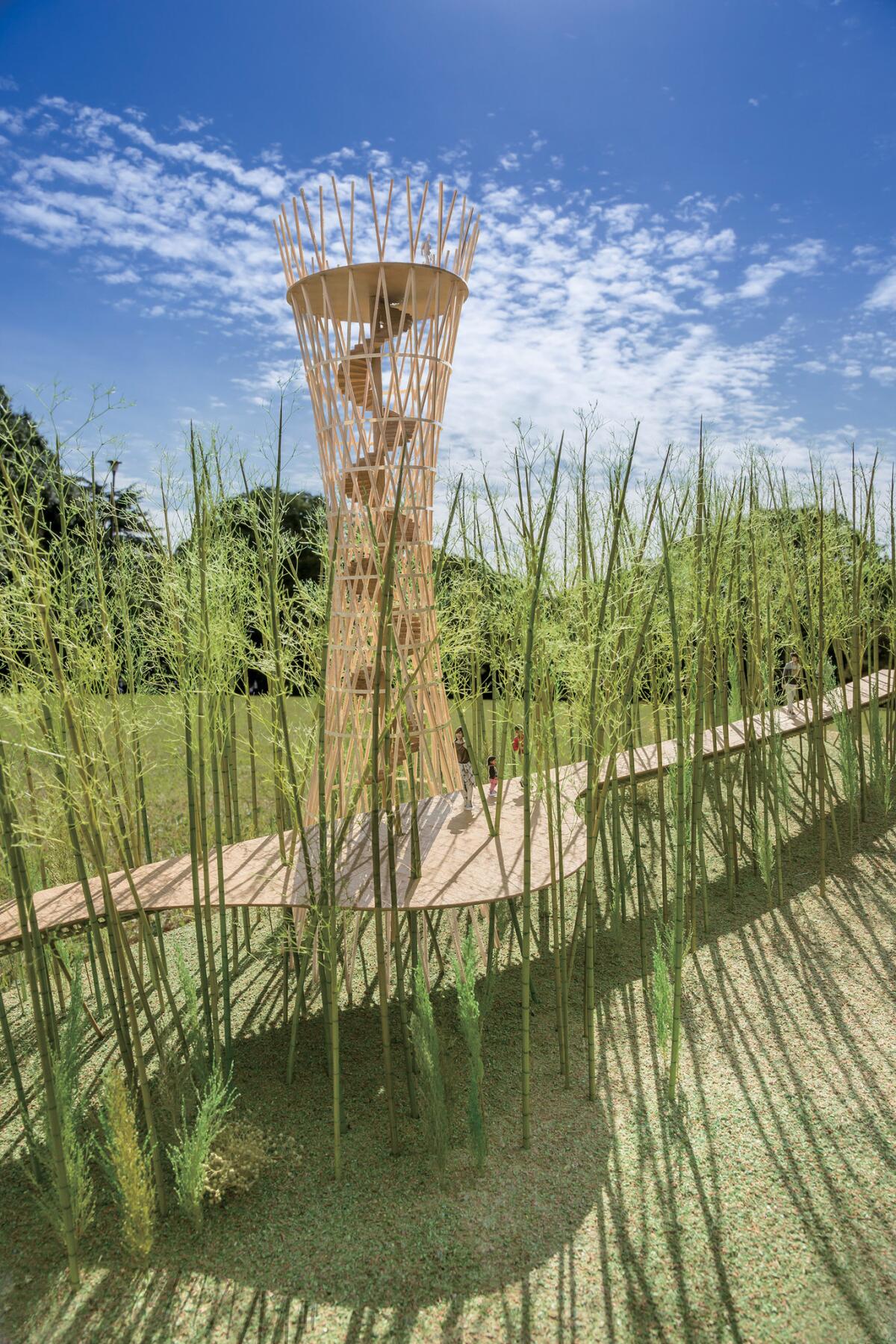
The designs they presented included Choi’s own tower: an airy bamboo urn with an internal winding staircase. Icelandic Danish artist Olafur Eliasson, who dragged icebergs to the Paris climate summit and famously built a waterfall on the Brooklyn Bridge, collaborated with German architect Sebastian Behmann on a pavilion consisting of tall, overlapping bamboo circles webbed with shimmering, condensation-trapping mesh — which, to an approaching viewer’s perspective, symbolically appear to unite. Japanese artist Tadashi Kawamata, who’d lately adorned several Paris buildings with oversized wooden swallow’s nests, proposed to hang one from a DMZ cliff.
Korean minimalist Lee Ufan, whose works are in New York’s Guggenheim, London’s Tate and St. Petersburg’s Hermitage, devised a split arch where North and South Koreans will hover in facing tea rooms. His compatriot Lee Bul, whose solo shows around the world — including the Orange County Museum of Art in 2002 — usually involve polymers and metal, answered Choi’s challenge to employ natural DMZ materials with reed cocoons suspended from the walkway. Mumbai architect Bijoy Jain, winner of the 2009 Global Award for Sustainable Architecture, submitted a cluster of three-dimensional mandalas. The dean of Korean architects, Seung H-sang, conceived a vertical monastery intended for birds as well as humans.
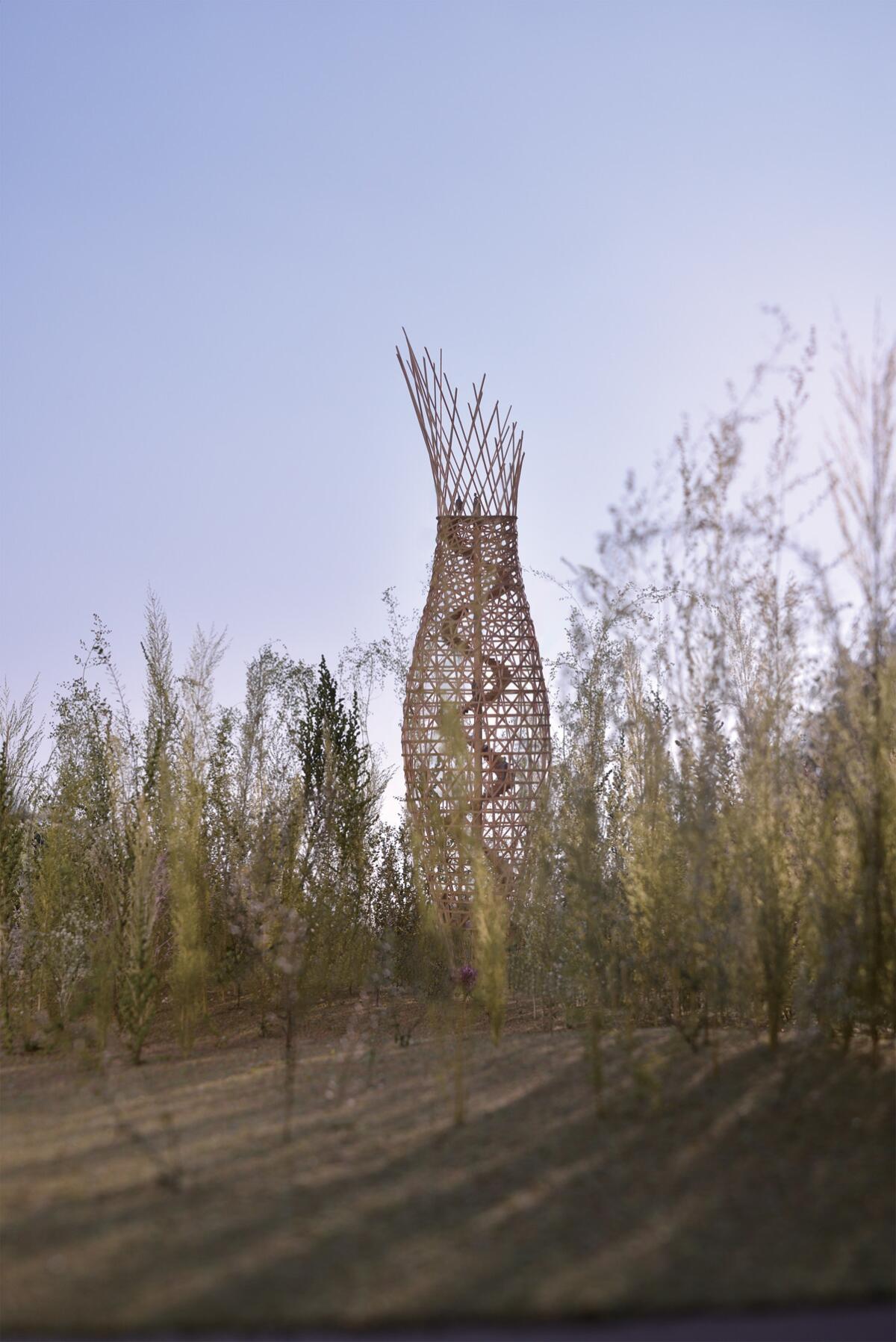
SIGN UP for the free Essential Arts & Culture newsletter »
The perfect place for the seed and knowledge banks, explained fellow Seoul architect Minsuk Cho, 2014 winner of the Venice Biennale’s Golden Lion for best pavilion, is an adjacent invasion tunnel dug by North Korea, discovered in 1975 when South Korean soldiers noticed smoke rising from the ground. To give access to researchers from both countries, he envisions a 10-meter-deep (about 33 feet) inverted spiral ramp, entering the tunnel where it intersects the border. “Like a reverse Tower of Babel.”
A hot spring that surfaces near that spot is one reason why so many rare birds spend winter in the DMZ. But the first assignment for physicist Jaeseung Jeong, who’s overseeing the seed and knowledge banks for the DMZ’s estimated 2,700 species, will be landmine removal.

The U.S. Army alone has planted more than a million in the DMZ, mostly plastic M14s that evade metal detectors. “It’s the only plastic in the DMZ,” says Choi. “This is both one of the purest and most dangerous places on Earth.”
They’re exploring new, drone-based, plastic-detection technology and the use of ballistic gel to smother landmine explosions. Removing landmines, Choi speculates, could cost more than the entire installation. “But cost isn’t so serious. What’s serious is world peace. Compared to that, cost is nothing.”
Jeong, who models brain dynamics at Korea’s premier technology institute, KAIST, agrees. Recently, an international human brain mapping symposium was moved from Seoul to Singapore due to the current North Korean missile crisis. He now thinks that along with ecological data, the granite-lined tunnel vault should hold analog versions of the world’s most valuable knowledge, from Bibles to dictionaries to quantum mechanics texts, to help future generations rebuild civilization in the event of natural disasters or nuclear war.
“There may be some survivors. We hope they’re not stupid enough to self-destruct, like us.”
With Kim Jong-un and President Trump taunting each other on a planet-sized playground, it might seem less likely than ever that “Dreaming of Earth” could be built. But should Kim conclude that the substantial international goodwill North Korea would accrue from a symbolic, joint project with South Korea would effectively stick a Korean peninsula-sized thumb in Trump’s eye, it could be the perfect time.
“He’s not stupid,” says Choi. “Even if he doesn’t care about art or ecology, if he thinks it’s good for him, why not?”
From the blood of many young soldiers who sacrificed their lives, a garden blossomed.
— South Korean artist Jae-Eun Choi
Her next step is getting South Korea’s diplomats to broach the plan. But even if Kim Jong-un were to agree tomorrow, with mine removal, construction logistics in a wilderness preserve, and eventual parleys with North Korean artists, she expects the process could take from five to 10 years.
“But process is my kind of artwork. This is the interesting part.”
After Shigeru Ban discovered through recent tests that bamboo grows poorly in the DMZ, they decided instead to build the walkway from timbers, charred to repel rot and insects. “We’ll use wood from the countries who’ve most affected Korean history: the United States, Japan, Russia, and China,” Choi proposed. “Step by step, we’ll solve these details.”
One day, she’s convinced, “Dreaming of Earth” will be built, and she has begun seeking government and United Nations funding.
“We need it. They need it. We don’t need war: With terrorism, hurricanes, and extinctions, the world is already dangerous enough. In such times, we must get together. Right now, this must be our art.”
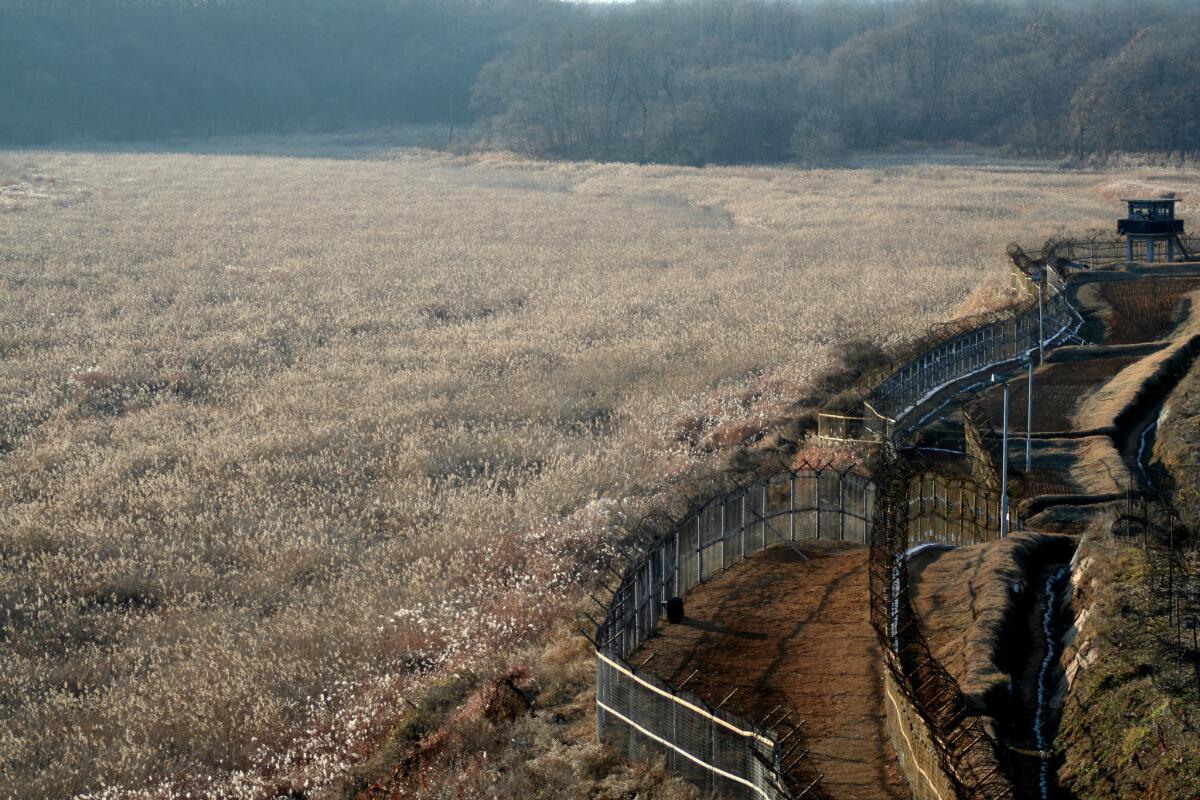
See all of our latest arts news and reviews at latimes.com/arts.
THE BEST OF 2017:
Architecture: Herzog & de Meuron, “Columbus” and L.A. voters
Art: Martin Ramirez, ‘Radical Women’ and Bellini
The biggest entertainment stories
Get our big stories about Hollywood, film, television, music, arts, culture and more right in your inbox as soon as they publish.
You may occasionally receive promotional content from the Los Angeles Times.







